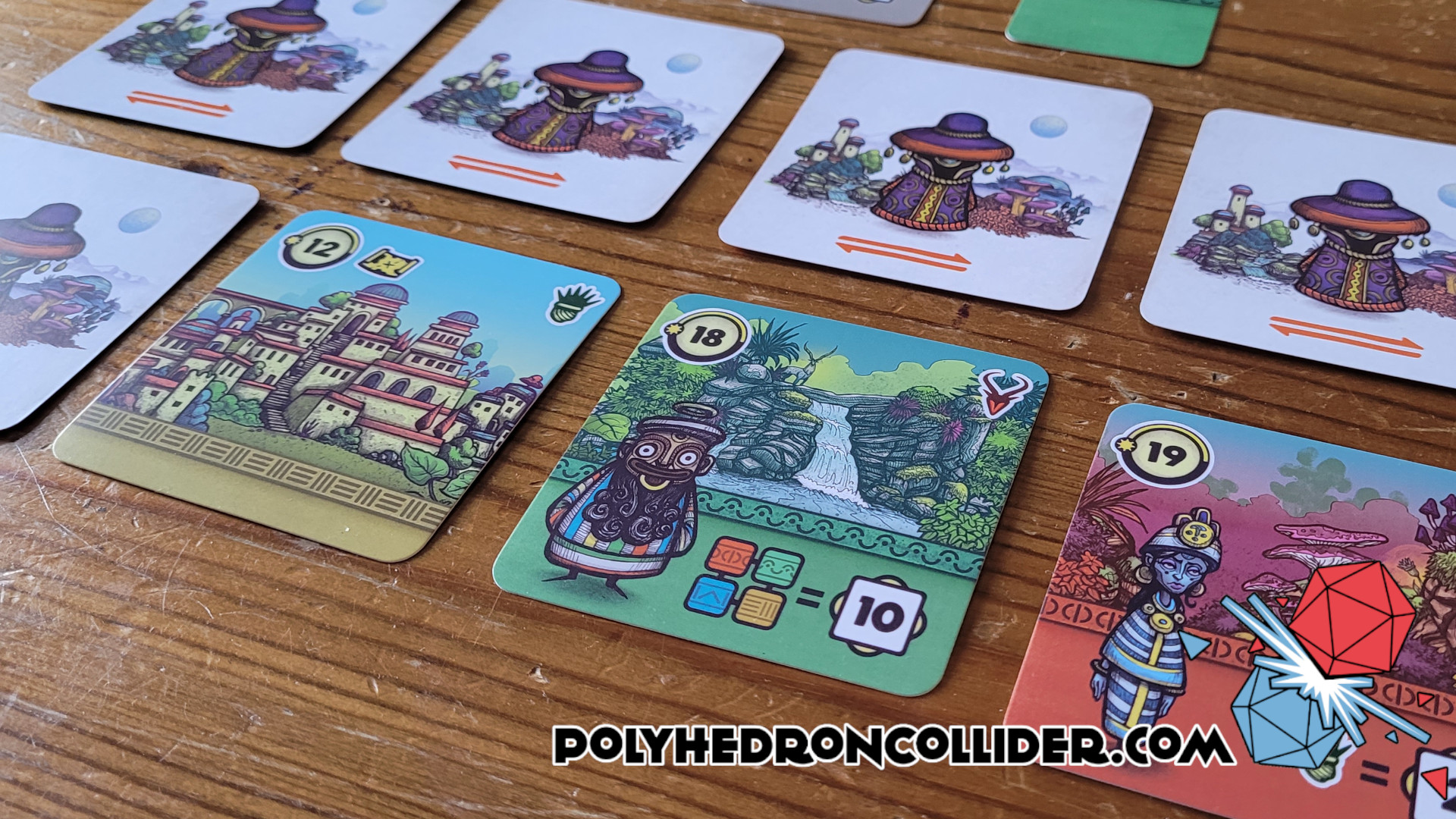This succinct little tableau-building, action programming game does something brilliant in its simplicity and simple in its brilliance. A game of Faraway will not take long, and it will not melt your brain, but each game will leave you feeling like you’ve just scratched a little bit more off it, that you understand the nuances just a fraction more, and that your next game will be that fabled, perfect game.
The concept of this game is straightforward, you are going on a journey, a quest, a Faraway mission if you will (see what they did there). On your journey, you will cross various biomes at all hours of the day, you will meet various denizens of this fantastical land, Alula, and they will give you Quests. In turn these quests will award you fame and the player with the most fame after playing eight cards wins.
Some Quests will award Fame just for rocking up, most however will have a prerequisite, depicting a number of the game’s three resources*. To unlock that reward you need to have uncovered, or rather, that you have visible on other cards, those resources. It is here that Faraway takes a brilliant and delightful twist.
Cards will only score at the end of the game, however; they score reverse to the order in which you played them. Like Bilbo, in Faraway you are going “there, and back again”. Once you have played all eight cards (and made your outward journey), you flip them all facedown. Starting from right to left, you make your way home, scoring each card along the way by completing quests using only the visible resources.
For me, this game feels a lot like reverse action programming, this shift in perspective of a classic board game mechanism makes it feel so fresh and so different. Initially, when you are playing cards you have to keep in mind that it will only score based on the following cards – and at the point that you are playing them, you do not know what they are. This foresight though does direct how you draft new cards, but, as with the cards you have already added to your tableau, this too will (probably) have a quest that you will want to try to complete.
Drawing new cards into your hand is also managed in a slick and clever fashion. Each card, or Region to give them their proper name, has an Exploration Value that represents how many hours it takes to explore. So, the lower the number, the sooner you can move on to the next region, which is mechanically mirrored by selecting a new card from the market first.
Planning the order you play your cards is the absolute crux of this game, but it is never overburdened as you only have a hand size of three. Playing a card with a higher exploration will grant you access to a Sanctuary card (permanent bonus cards), but lower-valued cards gain you earlier access to the market – and like all games with a market, earlier is always better. On top of all of this, though you also still need to consider the quests and resources.
The art and overall style of this game cannot be overlooked. The game looks bright and vibrant. The style of it puts me in mind of Maurice Sendak (Where The Wild Things Are) which lends itself to this notion that you are telling a story, a classical children’s fable about an epic journey. The art emboldens the theme that usually, in lighter games is less important. For Faraway though, the art conducts the teaching and the play; these resources aren’t just crystal, flower, and animal. They are Uddu, Goldlog, and Okiko; this whimsical and wonderful art charms you and allows you to be immersed in this simple, enchanting, and clever game.
There is no denying it, Faraway is a light game. It is not the usual type of game to get us at Polyhedron Collider excited and enamoured. But, it is just bloody belting. Designers Johannes Goupy and Corentin Lebrat have created a game that could have been an utterly mediocre tableau building, but in one deft, creative, and highly imaginative way, they have turned Faraway into something special. The basic rules belie the emergent interactions of the cards and the scoring mechanism; the game probably won’t click until you are halfway through it. Even then, subsequent games will often leave you feeling that the knack for it is just one more game away.
*The rulebook for this game is utterly charming, ‘Notes on Alula’ tells of the land, its inhabitants, and the resources, Uddu, Okiko, and Goldlog. Most wonderful of all though, it frames all of these in a whimsical, fairy tale-like manner, which makes me wish there was a children’s storybook to accompany it. There definitely should be a colouring book to accompany this game!











.png)








0 comments:
Post a Comment